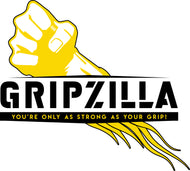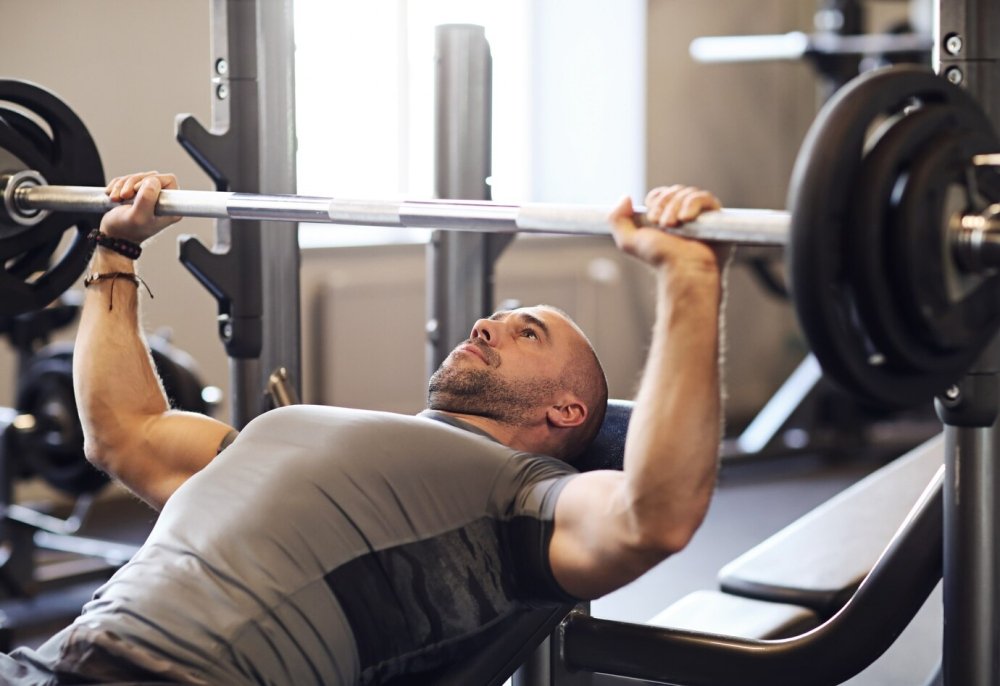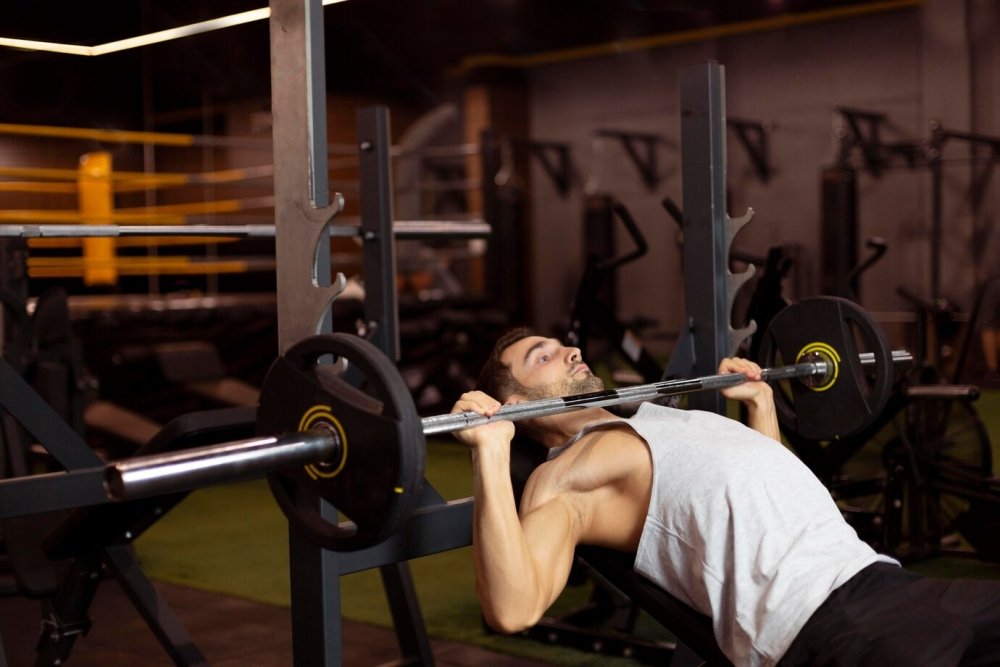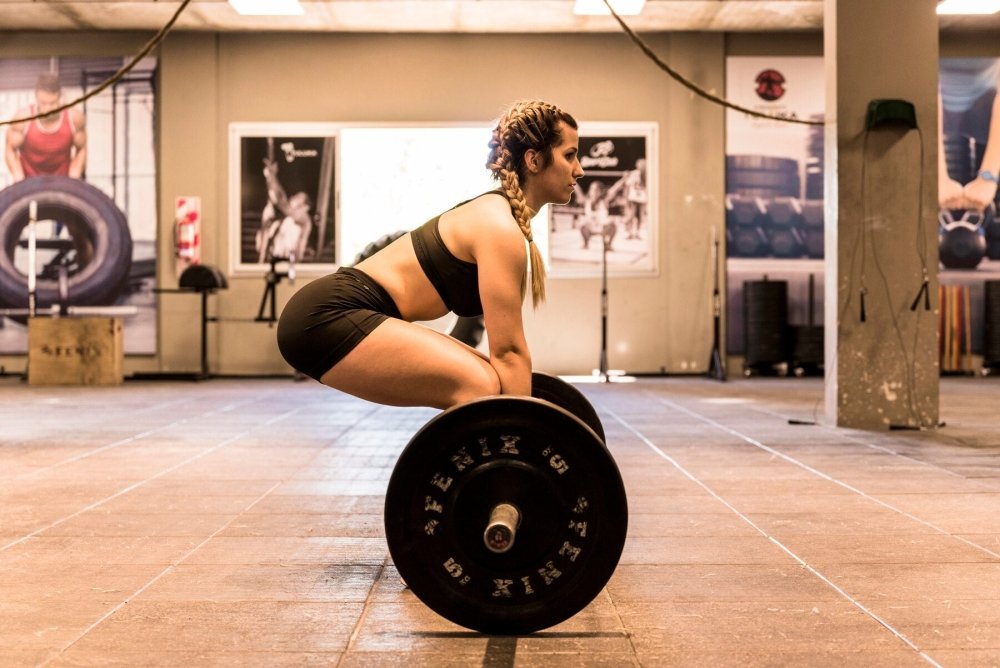If you've ever hit the bench press, you know it's not just a workout—it's a way of life.
But let's not get stuck in the same old routine, shall we? It's time to spice things up, give your muscles a new challenge, and conquer the bench press in ways you never imagined.
We’re actually talking about the various types of bench press grips.
From classic grips to funky variations, get ready to explore so many possibilities that'll have you saying, "Who needs wings when you've got pecs like these?"
Types Of Grips Used in Bench Press
Listed below are the most popular types of bench presses that professionals absolutely love:
1. Standard Grip (Shoulder-Width Apart)
This is the most common grip used in bench pressing.
Your hands are placed on the barbell slightly wider than shoulder-width apart. Keep your wrists straight and aligned with your forearms.
Lower the barbell to your chest, then press it back up, extending your arms fully.
Benefits Of Standard Grip
- Balanced workout for chest, shoulders, and triceps.
- Good for beginners.
- Promotes overall upper body strength.
2. Wide Grip
In this grip, your hands are placed wider than shoulder-width apart on the barbell. This grip emphasizes the outer chest muscles and shoulders.
Keep your elbows tucked in, lower the barbell to your chest, then push it back up, maintaining control throughout the movement.
Benefits Of Wide Grip
- Emphasizes outer chest muscles and shoulders.
- Broadens chest and shoulders.
- Increases range of motion for greater muscle activation.
3. Close Grip
With this type of bench press grip, your hands are placed closer together on the barbell, usually around shoulder-width apart or narrower. Close grip bench press targets the triceps more than the chest.
Lower the barbell to your chest while keeping your elbows close to your body, then press it back up, focusing on engaging your triceps.
Benefits Of Close Grip
- Targets triceps more than chest.
- Builds triceps strength and size.
- Improves lockout strength in bench press.
4. Reverse Grip (Underhand Grip)
Also known as the supinated grip, this grip involves gripping the bar with your palms facing towards you. It primarily targets the lower pecs, triceps, and biceps.
Lower the barbell to your chest while keeping your elbows close to your body, then press it back up, maintaining control and stability.
Benefits Of Reverse Grip
- Targets lower pecs, triceps, and biceps.
- Defines lower chest.
- Improves arm strength.
5. Neutral Grip
This grip involves using dumbbells or a specialty barbell with handles that allow your palms to face each other. It's beneficial for reducing strain on the wrists and shoulders.
Lower the weights towards your chest while keeping your elbows slightly tucked, then press them back up, focusing on maintaining stability and control.
Benefits Of Neutral Grip
- Reduces strain on wrists and shoulders.
- Safer for those with wrist or shoulder issues.
- Activates chest and triceps effectively.
6. Thumbless Grip
In this type of bench press grip, you wrap your fingers around the bar but don't wrap your thumbs. It's controversial due to safety concerns but some argue it allows for a more natural wrist position.
Lower the barbell to your chest with control, then press it back up, maintaining proper form and control.
Benefits Of Thumbless Grip
- Potentially allows for more natural wrist position.
- Controversial due to safety concerns.
7. Suicide Grip
Also known as the false grip, it involves placing the thumb on the same side of the bar as the fingers instead of wrapping it around. Many consider suicide grip unsafe because it risks the bar slipping from the hands.
However, some find it more comfortable for bench pressing. Use caution if attempting this grip, ensuring a secure grip on the bar at all times.
Benefits Of Suicide Grip
- May reduce wrist and forearm strain.
8. Bulldog Grip
This grip involves placing the hands closer together on the barbell than the standard grip, with the thumbs touching each other. It's an advanced variation that emphasizes triceps engagement and may require lighter weights due to increased difficulty in stabilizing the bar.
Lower the barbell to your chest with control, then press it back up while focusing on maintaining balance and control.
Benefits Of Close Grip
- Emphasizes triceps engagement.
- Builds triceps strength and size.
- Challenging variation for improved bench press performance.
How To Improve Your Grip For Bench Press?
How about we talk about a couple of cool instruments that you can use to improve your grip strength for bench press?
Let’s go:
1. Hand Grippers

Hand grippers are these small gadgets that you squeeze in your hand to make your grip stronger.
When you're just starting, it's good to use one that's not too hard to squeeze. Then, as you get stronger, you can try ones that are tougher.
2. Gripzilla Tornado

Let's talk about the Gripzilla Tornado. It's a special strengthener designed to help you get a better grip.
It comes with different levels of resistance, so if you're not super strong yet, no worries! You can start easy and work your way up.
Plus, it's made to help you use the right form, like standing up straight and moving your arms just right, so your muscles work the best.
3. Gripzilla Dynamo

Now, onto the Gripzilla Dynamo. It's another handy gripper for making your grip stronger.
What's cool about this one is that you can change how hard it is to squeeze to match what you need. And get this—you can also change how you hold it to target different muscles.
It can even spin in both directions, which is great for making all your forearm muscles stronger and balanced.
This tool can rotate in both directions, effectively engaging forearm muscles and promoting balanced strength development.
Final verdict
The bench press isn't just about pushing weight—it's about pushing boundaries and exploring new techniques.
So, next time you hit the gym, ask yourself: Which grip will I conquer today?
Will it be the classic, the close, or perhaps the daring reverse?
The choice is yours.



